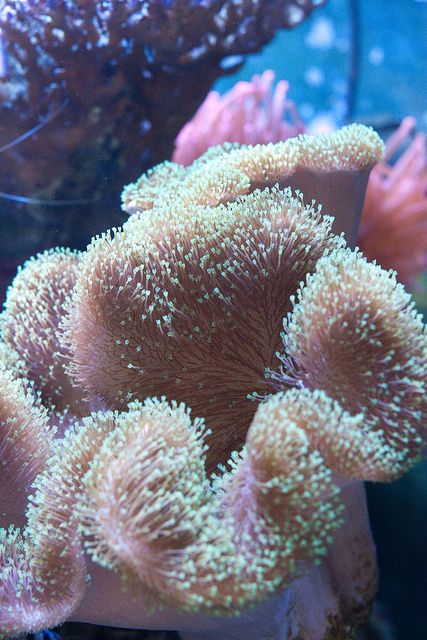Giant Carpet Anemone Care

The result is the expulsion of the animal s complement of zooxanthellae which eventually leaves the host looking very pale to white or even translucent.
Giant carpet anemone care. Carpet anemones house symbiotic algae known as zooxanthellae in their tissues just like reef dwelling corals and they are highly dependent on strong lighting to stay healthy. The gigantean carpet anemone typically will get over 2 feet in diameter and will frequently get to around 3 feet when kept in ideal conditions. The giant carpet anemone is an expert only anemone that needs high lighting and strong water movement. A healthy specimen will have a tightly closed mouth and will be very sticky.
The large carpet anemone plays host to a variety of clownfish in the wild. Around 34 to 36 inches. Some comments by michael. The giant carpet anemone stichodactyla gigantea can play host to clownfish threespot domino damsels and periclimenes shrimp but have been occasionally known to eat their residents and can consume other fish and invertebrates with wild abandon.
Feed at least weekly with chunks of frozen silversides shrimp squid and other meaty foods for large carnivores. Hence it is better to place the pump and heater in a separate slot in order to avoid accidents. Similarly a water heater can burn the tentacles of an anemone. Make sure your tank is at least 2 years old before adding this invert to your tank and make sure you have a 3 to 4 sand bed for the anemone to bury its foot.
Bleaching occurs primarily when an anemone coral giant clam etc. Intense lighting is a must 250w hqi 20 000k ab metal halide is what i use now and weekly water changes. The majority of their energy is derived from symbiotic algae living within their cells providing the anemones with excess energy that they make via photosynthesis the use of sunlight to convert carbon dioxide into food energy. Like most corals and several other anemones giant carpet anemones utilize a combination of methods to obtain food.
Open water pumps in the aquarium can be dangerous for them as their tentacles can get easily caught in the pump and can even lead to their death. Feed them several times per week and keep your water quality stable and high. This species may sting nearby corals and other invertebrates. Stichodactyla gigantea reef safe.
Low to moderate lighting. Although not necessary the saltwater species that will live in symbiosis include amphiprion clarkii a. I feed mine 5 silversides a week. Vho compact fluorescent and t5 high output lighting or metal halide lamps should suffice depending on the depth of the aquarium.
Is exposed to elevated temperatures that get too high for too long.
















































